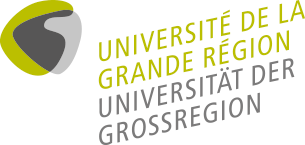UniGR key area: Materials Science and Resource Efficiency
- Recycling of waste products containing metal and innovative processes for minerals processing.
- Modelling materials with the aid of multi-level simulations.
- New methods for concrete recycling.
These three topic areas are exemplary for a wealth of different current issues and approaches in the field of materials science. In this area in particular, the University of the Greater Region sees the possibility of profitably employing and combining the skills and experience of all partner universities.
The following topic areas have already been processed or are being processed:
Advanced microstructure analysis
One of the key elements in materials quality control is microstructure characterization, as it relates production process settings with the final functionality of a material. Hence, precise and objective microstructure characterization provides essential information that allows tailoring functional properties of the material through adjustment of processing parameters and raw materials composition.
Furthermore, when dealing with state-of-the-art components that are made with new materials, quality control during the whole product life-cycle is getting essential in order to guarantee efficient and high quality production, proper operational stability, safety and reliability as well as optimum in-service performance of such components. Quality control using innovative methods of nondestructive testing (NDT) which are integrated in the production process with its different process steps (molding, forging, machining, assembly and joining, surface finishing) can offer excellent possibilities when high tech materials are thought to max out their mechanical, optical or chemical properties. Safe operation or advanced repair procedures for mixed-material assemblies can be inspected and even monitored with innovative NDT techniques. 3D-visualization and automated contactless inspection of complex shapes are a prerequisite for going to the limits of such modules and component parts, especially in light-weight design with ultra-highstrength steels, high performance light metals and alloys - and of course, for fibre reinforced materials (e.g. CFRP, GFRP).
Contact: Prof. Mücklich, Saarland University
Composites materials with metal/ceramic matrix
Construction materials
Construction materials: Recycled Concrete
Is it possible to recycle concrete? And how can it be used? After a series of workshops organised by the University of the Greater Region, a cross-border project on „Potential uses of recycled concrete“ has been developed. The universities of Luxembourg (Prof. Dr.-Ing. Danièle Waldmann), Liège (Prof. Luc Courard), Lorraine (Prof. André Lecomte) and Kaiserslautern (Prof. Dr.-Ing. Jürgen Schnell & Prof. Dr.-Ing. Wolfgang Breit), together with private and public partners, apply for funding from the Interreg North-West Europe programme for their research.
The European construction industry is consuming nearly half of all the raw materials while, at the same time, producing huge quantities of mineral waste. The EU aims at re-using and recycling 70% of the waste generated in construction and demolition by 2020 in accordance with the circular economy; so far it is only 50%. To achieve this goal, collaboration is the obvious approach.
Ecomaterials for building industry: advances and future prospects in the Greater Region
Magnetic materials
At the universities of Lorraine, Kaiserslautern and Saarbrücken, working groups have been established for studying magnetic phenomena and new applications at the highest level. In 2012, these working groups established the Greater Region Magnetism Network, GRMN in order to pool their activities, develop a concerted training and carry out technology transfer in an exemplary way. The objective of GRMN is to make use of the synergies within a highly innovative scientific-technical sector, which could give the Greater Region a locational advantage.
The initiative is a specific measure under the umbrella of the University of the Greater Region (UniGR). The project was funded by the INTERREG IV A programme - Greater Region.
For more information you may contact Prof. Uwe Hartmann at Saarland University.
Mineral processing and recovery of critical raw metals
Critical Raw Materials (CRM), as are rare earths, precious metals, steel refining metals, etc., are scarce resources and, e.g. in Germany, 100 % of those primary raw materials have to be imported. The unit operations, which have been used in mineral process engineering for a long time, have to be adapted and newly combined to meet nowadays demands to treat secondary resources, like clinker, end-of-life vehicles, urban residues, landfills, mining dumps, etc., successfully.
The objective of new approaches is to use conventional operations in mineral processing, e.g. hydrometallurgical, solid, magnetic or electrostatic separation techniques in new combinations (hybrid-processes) applying additional driving forces for metal re-cycling and re-use. Therefore, the expertise of various research areas is inevitable to aim for synergetic effects, which foster an enhanced problem solution competence in recycling of critical raw metals.
Contact:
Prof. Hans-Jörg Bart, Prof. Paul Ludwig Geiss of the TU Kaiserslautern
Prof. Stoyan Gaydardzhiev of the University of Liège
Eric Meux of the Université de Lorraine
Multiscale simulations
The modelling of material involves multiple scales. In computational problems mechanical properties and structural behaviour are described in a range varying from atomistic scale, nanoscale or microscale to macroscale. On the fine scales, the size and orientation of local inhomogeneities influence the mechanical behaviour while on the coarse scale or macroscale the average behaviour has to be taken into account. Usually different methods are used to model the processes on the different scales, e.g. molecular dynamics can be applied to model the atomistic scale response while the finite element method can be used to describe the behaviour on the macroscale.
If specimens become smaller or the local inhomogeneities become stronger, processes on multiple scales start to interact. Therefore, it is one of the essential questions in the modelling how to bridge the gap between fine scale quantities, like atomistic or molecular deformations or local fine structures to macroscale quantities like stress and strain. Multiscale simulations, with such features as high efficiency of continuous models and considerable accuracy of microscale models, are promising methods to resolve this problem. Different scales are connected via upscaling processes, i.e. appropriate homogenization processes that are used to compute the average properties of the macroscopic model.
The following situations may occur in multiscale modelling:
Single sided transference: Macroscopic properties of the material are computed on a small scale based on the locally inhomogeneous properties by homogenization techniques. The averaging is applied once and for all and the results are used on the macroscale
Multiple domains coupling: In a certain domain of interest a small scale model is used while in regions far away the macroscopic model is applied. The macroscopic properties should fit to the microscopic properties especially at the interface between the domains both models must fit together.
Multilevel finite element modelling (FE^2): The constitutive relation of a macroscopic model is replaced by a microscopic model and an appropriate homogenization/projection method. In this case the coupling is two-sided because the macroscopic state influences the homogenization procedure while the homogenized microscopic model determines the macroscopic material behaviour.
Seamless multiscale coupling techniques: Depending on the local properties the model can switch between a full resolution microscale model and a macroscale model. The seamless coupling is required not only on the multiple spatial scales but also on the temporal scales.
Contact:
Prof. Dr.-Ing. Stefan Diebels, Saarland University
Modern routes to solar energy conversion and storage
Tailored materials interfaces
Tailored materials interfaces are key elements in the design and function of modern materials. Prominent examples of interface-dominated materials are to be found in industrial sectors such as energy, electronics, automotive, optics and biomedicine. Scientists in the Greater Region perform valuable research activities in this promising area, but often without the coordination that could make these efforts even more efficient and visible.
Contact: Prof. Arzt, Leibniz-Institut für Neue Materialien / Saarland University



